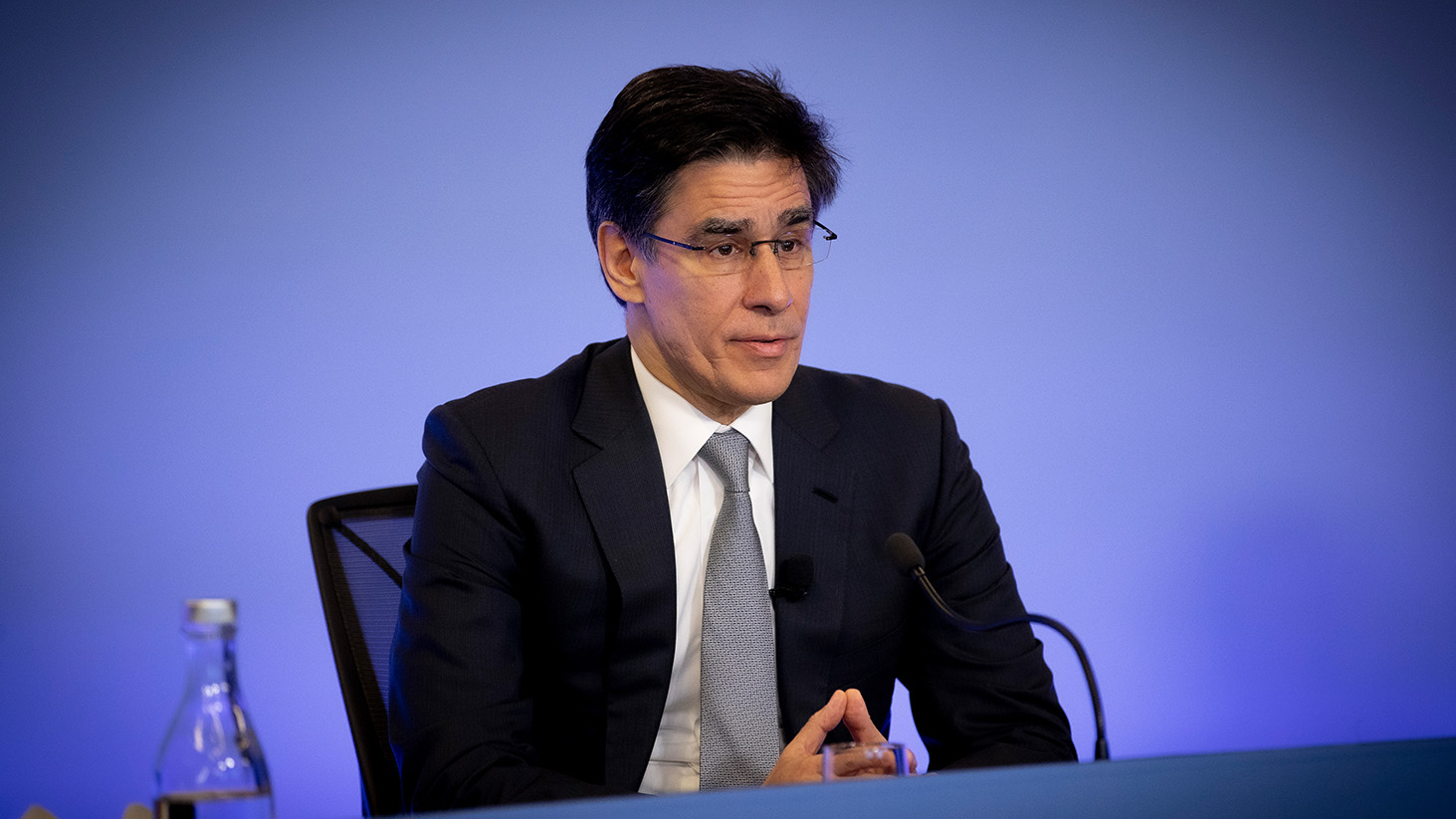Good morning everyone, and welcome.
I too would like to acknowledge the Gadigal People of the Eora nation as the Traditional Owners of the lands on which we meet today.
I pay my respects to elders past and present and extend that respect to other Aboriginal and Torres Strait Islander people joining us today.
Before we begin, I would also like to acknowledge Sunday’s devastating terrorist attack at Bondi Beach, not far from where we are meeting today.
On behalf of everyone at ANZ, our hearts go out to those who have been impacted, particularly our friends and colleagues in the Jewish community and across Sydney.
Hate and violence have no place in our community and our thoughts are with the victims, their families and friends, and everyone affected.
Now, turning to the business of the day.
It was a privilege to join ANZ in May this year, as CEO of a bank with a rich 197-year history.
Likewise, it is a privilege to be here in Sydney today addressing my first annual general meeting for the bank.
Since joining, I have met with many of you, our shareholders, as well as our customers, employees and other key stakeholders, and appreciate your feedback and insights.
I spent time in our key markets across Australia, New Zealand, Hong Kong, India, the UK and Singapore, while carrying out an extensive strategic review across the bank.
During the year we took important steps to help clear the path for our future, where we will deliver a stronger bank that is focused on our customers and on delivering value.
This included a settlement with ASIC to resolve regulatory matters, as well as organisational changes to simplify our bank.
As the Chairman noted, our full year statutory profit was down 10% largely due to the impact of significant items, as a result of these actions.
Excluding significant items, cash profit was flat from the prior year at $6.9 billion and our Cash Return on Tangible Equity was down slightly, to 10.5%.
Our balance sheet and capital position remained strong with Common Equity Tier 1 at 12.03% at the end of September having improved 25 basis points in the second half.
The results demonstrate that while our franchise is strong, action is needed.
Our refreshed ANZ 2030 strategy, unveiled in October, lays out a clear plan to materially improve the performance of our Australia Retail and Business & Private Banking divisions, while extending our leadership in Institutional and New Zealand.
At the heart of this strategy is our ambition to unlock ANZ’s potential to win the preference of customers, shareholders and other stakeholders.
ANZ 2030 is focused on four strategic pillars:
1. Customer First
With market leading, differentiated and superior propositions, we will raise the standard of every digital and human interaction for our customers.
2. Simplicity
To set the market standard for productivity, we will deliver organisational simplification, divest non-core assets and improve efficiency.
3. Resilience
Leading the industry in trust, safety and risk management, we will adhere to the highest standards of non-financial risk management and strengthen end-to-end accountability across the bank.
4. Delivering Value
To sustainably improve our financial performance, we will create lasting value by delivering higher returning growth and results that matter for our stakeholders.
In delivering these priorities, we are supported by our core enablers – our culture, our people, and our technology.
Our strategy will be delivered in two clear phases.
1. The first phase, across FY26 and FY27 is about delivering on immediate priorities in order to get the basics right, including a substantial improvement in productivity and initial investment for growth.
2. In the second phase, beyond FY27 we will realise the benefits of these strong foundations, accelerate growth and outperform the market.
Our most immediate priority has been to ensure we have the right leadership team in place to execute our strategy and build the right culture.
As the Chairman noted, four new members have joined my Executive Committee.
Together we are building a culture of clarity, decisiveness, self-awareness, execution and accountability – while fostering an engaged workforce motivated to execute on our strategy.
We are on track for our second priority, which is bringing forward the integration of Suncorp Bank to accelerate value creation for our shareholders, benefit our customers and significantly reduce operational complexity.
We will complete a safe and secure migration of Suncorp Bank customers to ANZ by June 2027 and this work is already underway.
Our third priority is also on track to accelerate the delivery of the ANZ Plus digital front-end to all of our 8 million retail and SME banking customers by September 2027.
We have made significant progress on our fourth priority, simplifying the bank and reducing duplication.
This includes stopping initiatives that are not aligned with our strategy and prioritising what will make the most difference to our customers.
Uplifting our non-financial risk management is also a key priority both now and into the future.
A significant amount of work is already underway to support the business and cultural transformation, which delivers a better-run bank for our customers.
I recognise that as CEO, I am ultimately accountable for making sure we get this right.
As I mentioned earlier, a key pillar of our ANZ 2030 strategy is to put our customers first.
I am well aware that many CEOs say their companies are “customer-focused”.
But stating this, versus truly living and delivering on it, are two very different things.
Despite our good intentions, we have not consistently lived up to the expectations of our customers across all of our businesses.
I want to stress to you today that we are going to get back to growth by getting back to basics and relentlessly focusing on customers across every segment and business of ANZ.
This is not about a headline on a slide but rather a mindset we are going to drive throughout the organisation.
We will increase bankers in both Australia Retail and Business & Private Banking by up to 50% over the next five years while giving them much better tools.
We will also sharpen our focus on customer service.
This will be supported by our recent launch of Bank@Post, providing ANZ customers access to banking services at more than 3,300 participating Australia Post offices nationwide.
Helping customers through tough times is also critical, as cost-of-living pressures continue despite a cyclical reduction in inflation in the past year.
At the end of September, approximately four in every 1,000 Australian ANZ home loan customers and approximately two in every 1,000 Australian ANZ small business customers were receiving hardship assistance.
Importantly, over 68% of customers who entered hardship have either paid out their facility in full or are up-to-date on their repayments within 12 months.
We also remain firmly committed to helping keep customers safe from scams and fraud.
In 2025, our people and systems prevented and recovered more than $220 million in scam and fraud-related funds across Australia and New Zealand.
Through the year we continued to support the communities in which we operate.
In Australia, this included the launch of our First Nations Strategy, committed to advancing economic self-determination over the next decade.
We also continued to build our financial education and matched savings program, Saver Plus, which is the largest program of its kind in the world.
Funded by ANZ and the Australian government, Saver Plus is delivered in partnership with Berry Street Yooralla, Brotherhood of St Laurence and The Smith Family.
More than 4,000 people participated in Saver Plus this year, totalling more than 66,000 since the program started in 2003 who have received around $28 million in matched savings from ANZ for education costs.
Our financial education program, MoneyMinded, also continued to grow, helping more adults on lower incomes build their financial skills, knowledge and confidence.
Looking back on 2025, I view this as a period of significant but necessary change for the bank which lays strong foundations for growth.
As we look ahead to 2026, I would like to remind you of our three key strengths.
First, our franchise has a strong competitive position.
We have two scale markets, Australia and New Zealand, and two market leading positions, in our Institutional and New Zealand businesses.
We also have a well-diversified business benefitting from our strong presence in the fastest growing economic region in the world, Asia.
Second, we have a significant opportunity, indeed obligation, to improve our performance in Australia Retail and Business Banking.
In Institutional and New Zealand, we are focused on extending our current leadership.
And third, we have the right strategy – ANZ 2030 – to unlock and deliver value from these opportunities.
I would like to thank our customers for trusting us this year with their banking needs and our employees for helping drive the change needed to support our strategy.
And of course I thank you, our shareholders, for your support and for joining us today.
I will now hand back to the Chairman.
For media enquiries contact:
Lachlan McNaughton
Head of Media Relations
Tel: +61 457 494 414
For analyst enquiries contact:
Cameron Davis
Executive Manager, Investor Relations
Tel: +61 421 613 819
Approved for distribution by ANZ’s Continuous Disclosure Committee




